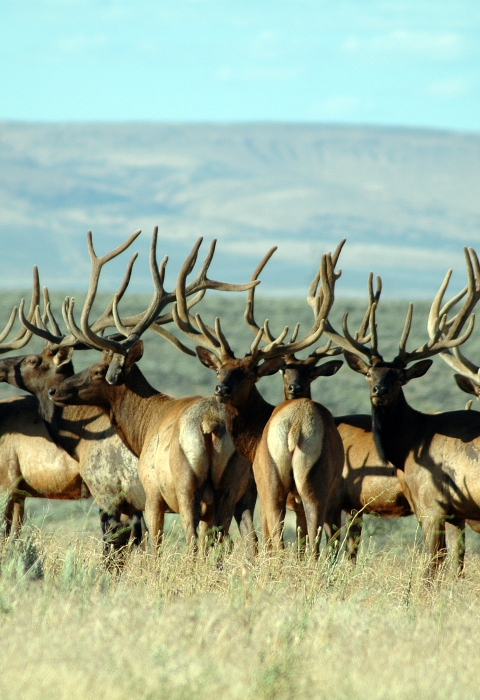To quote Bill Maher: “I don’t know it for a fact, I just know it’s true.” That seems to be the case for many when it comes to wildlife. Somehow, it’s become an accepted “fact” with many people that elk aren’t native to Washington State. They are. Elk remains, dating back at least 10,000 years, have been found in numerous archeological sites throughout the Columbia Basin. In “fact,” prior to the 1800s, elk lived in every state and province, except Alaska and Florida. Today, their range has been reduced to 24 states and seven provinces.
And yes, the elk historically found in the Columbia Basin were Rocky Mountain elk.
Unfortunately, like many species, elk were extirpated from the state by the late 1880s, possibly as early as 1850. However, in a conservation success, 50 Rocky Mountain elk (Cervus elaphus nelsoni) were transplanted from Gardiner, Montana, in 1912, and an additional 7 elk from Montana were purchased from Manitou Park in Spokane in 1916. These animals were released on the Naches River in Yakima County. Additional transplants between 1913-1930 were released into the Blue Mountains and Colockum area.
In 1972, a band of five elk were spotted on the Hanford Site. From this small beginning, the herd has grown to upwards of 2,000 animals.
One of the early elk to Hanford was a bull that came to be known as Melvin. Likely one of the most intensely studied elk ever, Melvin lived to the impressive age of 17 and grew to weigh over 1,100 pounds. Known for his massive antlers, almost every year’s set is accounted for, including perhaps his largest on display at McNary National Wildlife Refuge.




